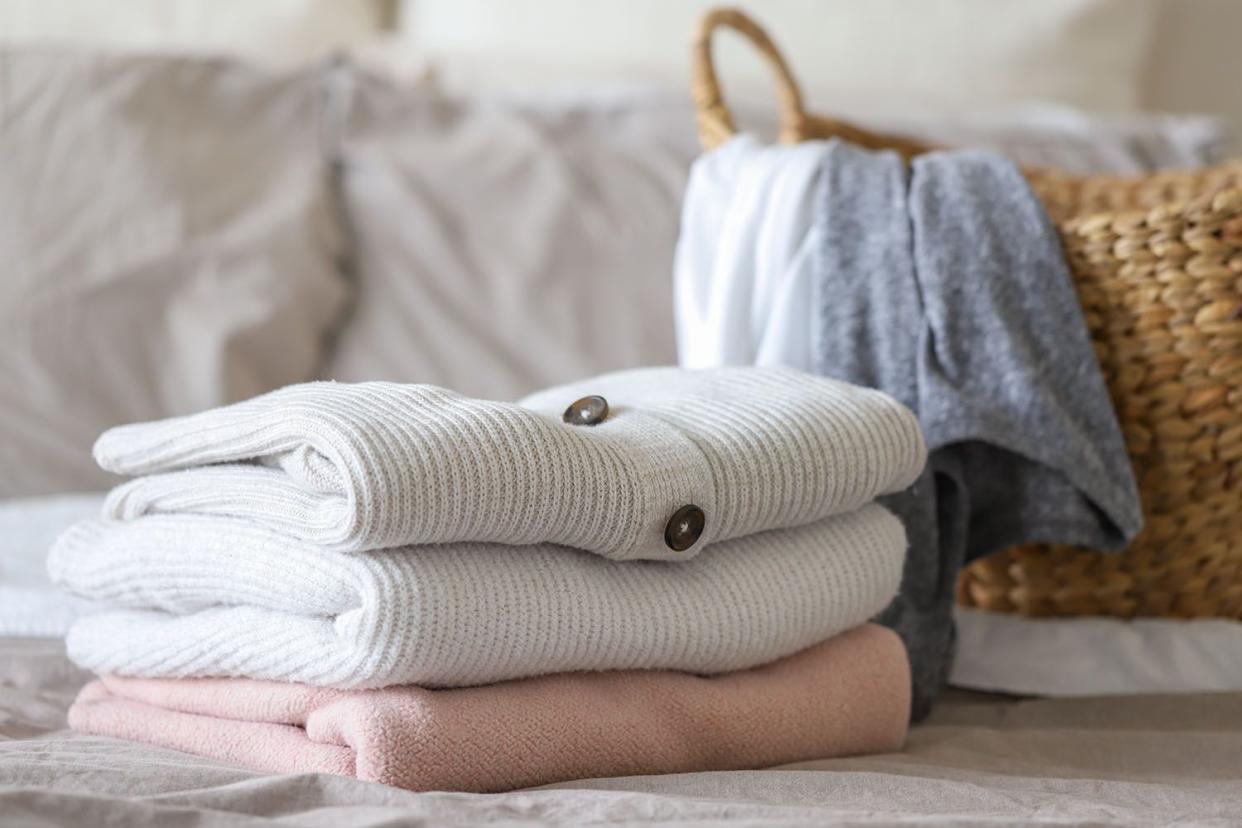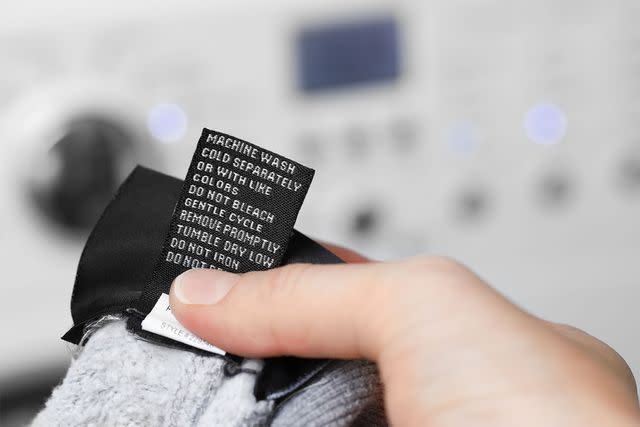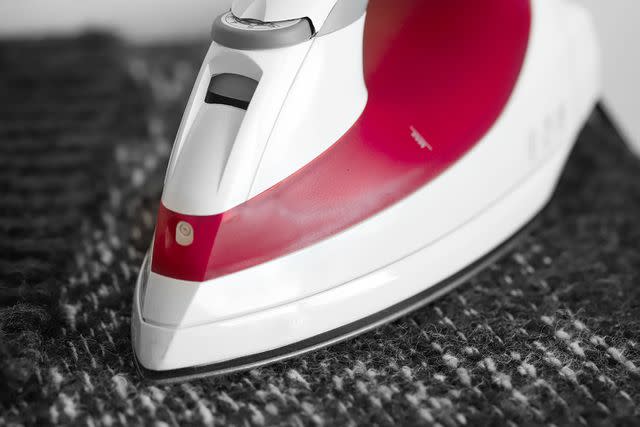How to Prevent Clothes From Shrinking

The Spruce / Kori Livingston
Fact checked by Cherisse HarrisReviewed by Brandon Pleshek
You've found the perfect fitting shirt, sweater or dress. Then you wash it and it feels snug or the sleeves would now fit an orangutan. What happened?
Why do Clothes Shrink in the Laundry
Even if you carefully followed all the "rules" of how to do laundry, shrinking and stretching can still happen. A great deal of how clothes react during cleaning happens long before you even enter a store to purchase them. The type of fibers, weave, and manufacturing techniques will determine how well the clothes perform after wearing and washing.
Every type of clothing fiber reacts differently. Natural fibers (wool, cotton, bamboo) have more stretch than most man-made fibers (polyester, acrylic, nylon). Loose fabric weaves stretch more than tighter weaves; but loose weaves will also tighten up or shrink more when exposed to water, heat, and agitation than a sturdy weave.
You can still make a difference in how your clothes look and reduce shrinking and stretching by using the right laundry techniques. Even then, in almost all garments there will be some shrinkage or stretching due to wear and tear of the fabric. Shrinkage or stretching at any time is residual, so even a tiny shift in size after each time the garment is cleaned will add up.
Prevent Clothes From Shrinking
1. Read the labels to learn how to care for clothes. Follow the guidelines regarding home washing vs dry cleaning, water temperature, type of laundry cycle, and dryer cycle recommendations. For natural fibers, look for the word "preshrunk." Some clothing manufacturers, especially bargain brands, find savings by stretching the fibers in garments as far as they can go during production so they'll use less fabric. If the fibers are preshrunk before the fabric is woven or the fabric is preshrunk before the garment is cut and sewn, there will be less shrinkage during its lifetime.

2. While using cold water will not prevent all shrinking, using cold or warm water when washing is less damaging to fabric than hot water.
3. The gentle cycle of a washer or hand-washing is also less damaging than washer cycles that have longer agitation and higher rotation spin cycles to extract water.

4. Front-loading or top-loading high-efficiency washers without a center agitator are less damaging and will cause less shrinkage in clothes than standard top-loading washers. The tumbling action of high-efficiency washers is more gentle to fabrics than the forced action of a standard washer agitator.
5. Allowing clothes to air dry is the most gentle method and helps prevent shrinkage. For loosely woven fabrics or knits, drying the garment on a flat surface will also prevent stretching. If you can't air dry clothes, use lower heat settings on the dryer and remove the clothes while slightly damp and allow them to finish air drying. Excessive heat is hard on fabrics.


Warning
This technique may not turn out well. No one can predict how much or in which direction a garment will shrink. If you found the perfect outfit but it is too big, take it to a professional tailor to have it altered to fit.
The same warning applies to stretching a garment to make it bigger. Most clothes will not withstand excessive stretching and seams will pop and fibers will break. Again, take it to a professional tailor to have the seams let out.
Save Shrunken Clothes
For shrunken woolen sweaters, rewashing and reshaping may reverse the outcome. Follow these instructions to hopefully save the sweater:
Soak the sweater in lukewarm water and about 1/3 cup of hair conditioner.
Allow the sweater to soak for about 10 minutes before draining.
Gently press out water water being careful not to wring the material.
Roll the sweater out on a towel continuing to press out excess water.
Reshape the sweater gently pulling the fabric until it returns to its normal size
Continue to lay the sweater flat and allow it to air dry.
For woven cotton or linen clothes, pressing with a hot iron will flatten the fibers that have tightened up and sometimes add a bit of room to the body or length to a sleeve.

Read the original article on The Spruce.

